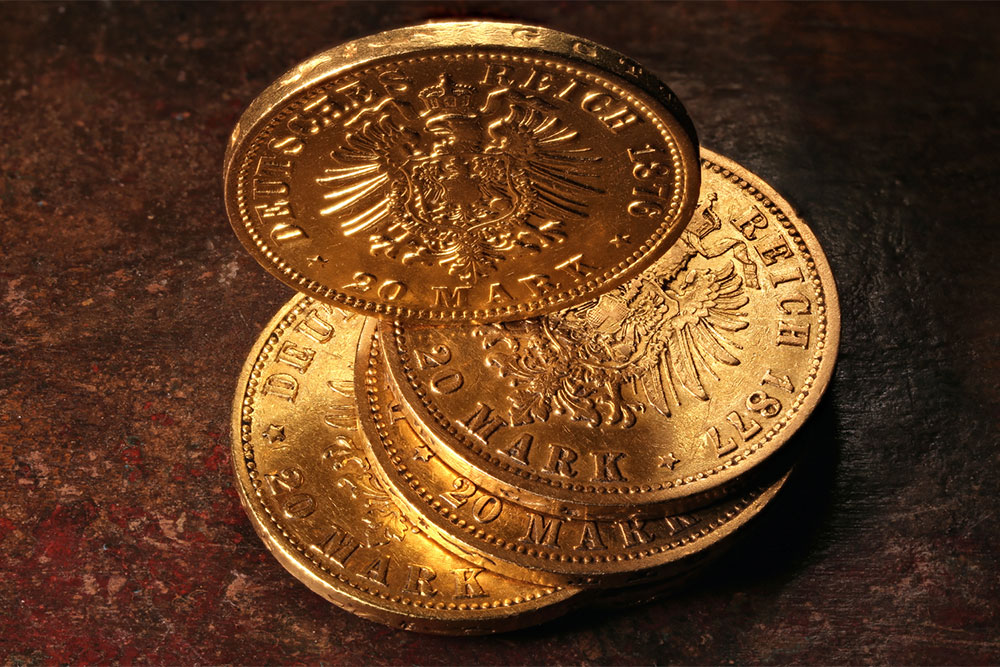7 Rare British Coins to Add to One’s Collection
For some people, coins are more than metal pieces with an exchange value. Rather, they are precious collectibles to be cherished for a lifetime. Buying certain rare coins and reselling them later can help one get rich. With the rise of the internet, many vendors now advertise coins with high returns and trade them conveniently. Those looking for a unique investment opportunity or a new hobby can consider getting their hands on such coins.
1937 Edward VIII Gold Sovereign
King Edward VIII famously renounced his throne just a few months after ascending it. Since very few coins were minted during his reign, finding them is almost impossible, making this coin one of the rarest in the world.

1933 George V Penny
With only seven coins of its kind being produced, the 1933 George V Penny is as precious as it is rare. These coins were minted during an era when it was customary to bury a complete set of the year’s coins underneath a new building’s foundation. Three 1933 George V Penny coins were minted specially for this purpose, while a few more were struck later to be preserved as antiques at the British Museum and the Royal Mint, which were never circulated.
1917 George V Gold Sovereign
Produced at the London Mint, the 1917 George V Gold Sovereign is among the rarest finds today with a rich historical significance. During World War I, the government melted several gold sovereign coins to repay the debt owed to other countries. So, if anyone finds a 1917 George V Gold Sovereign, it likely escaped the melting pot and survived the war. This coin sports a portrait of King George V on the obverse and St. George by Benedetto Pistrucci and the Dragon on the reverse.
1819 George III Gold Sovereign
With only over 3,500 such coins minted, the 1819 George III Gold Sovereign is worth millions today. In 1819, the country’s central bank temporarily suspended coin money exchange, so private merchants began producing and circulating gold coins. But it ‘s believed that since the masses began using banknotes instead of gold for transactions, these coins were shipped abroad. Only ten such coins are believed to exist today.
1703 Queen Anne Vigo 5-Guineas
After winning the Battle of Vigo Bay in Spain in 1702, the British fleet managed to procure gold bullion, which was used to mint the 1702 Queen Anne Vigo 5-Guinea coins. While victorious in this battle, all they could find in the enemy ships was a few gold coins, of which celebratory coins were minted to remember the country’s victory. During this time, Queen Anne also issued a royal warrant stating that the coins would serve as a reminder of the nation’s glorious victory. So, the obverse of this coin comprises a portrait of Queen Anne, whereas the rear side entails a sceptre design and a crowned shield.
1839 Una and the Lion Gold £5 Coin
This regal coin is admired for its aesthetics. It also has a deep metaphorical significance, with a young head portrait of Queen Victoria by William Wyon on the front and characters inspired by Edmund Spenser’s poem ‘The Faerie Queene’ minted on its rear side. Una, who personifies the church in the poem, tames a lion through her beauty and straightforward nature. The lion then becomes her guardian and accompanies her in her travels. In this coin, Una is depicted as Queen Victoria, who uses her sceptre to guide this lion. With only about 500 such coins minted, the 1839 Una and the Lion Gold £5 Coin is remarkably desirable and precious.
1492 Henry VII Fine Gold Sovereign
This rare find is a great example of fine gold sovereign coins. It features King Henry VII seated on a throne on one side and a Tudor rose and a royal shield on the other. While the coin doesn’t specify a year or date, it’s presumed to have been minted around 1492 during Henry VII’s reign. This coin has earned a fortune at auctions and is definitely a prized possession.
How to procure rare coins?
One of the best strategies for procuring the rarest and most valuable coins is to attend coin expos and auctions. Constantly looking for such events can help people find the best deals and expand their collections rapidly.
Being hasty doesn’t work with a hobby like coin collection. It helps to have patience and start small. One should assess the coin’s significance and value before plunging in. It’s a good idea to check out pictures of coins worth money and look for places that sell old coins nearby when making a decision. Having only the most valuable coins in one’s collection is much better than collecting multiple coins of little or no value.

